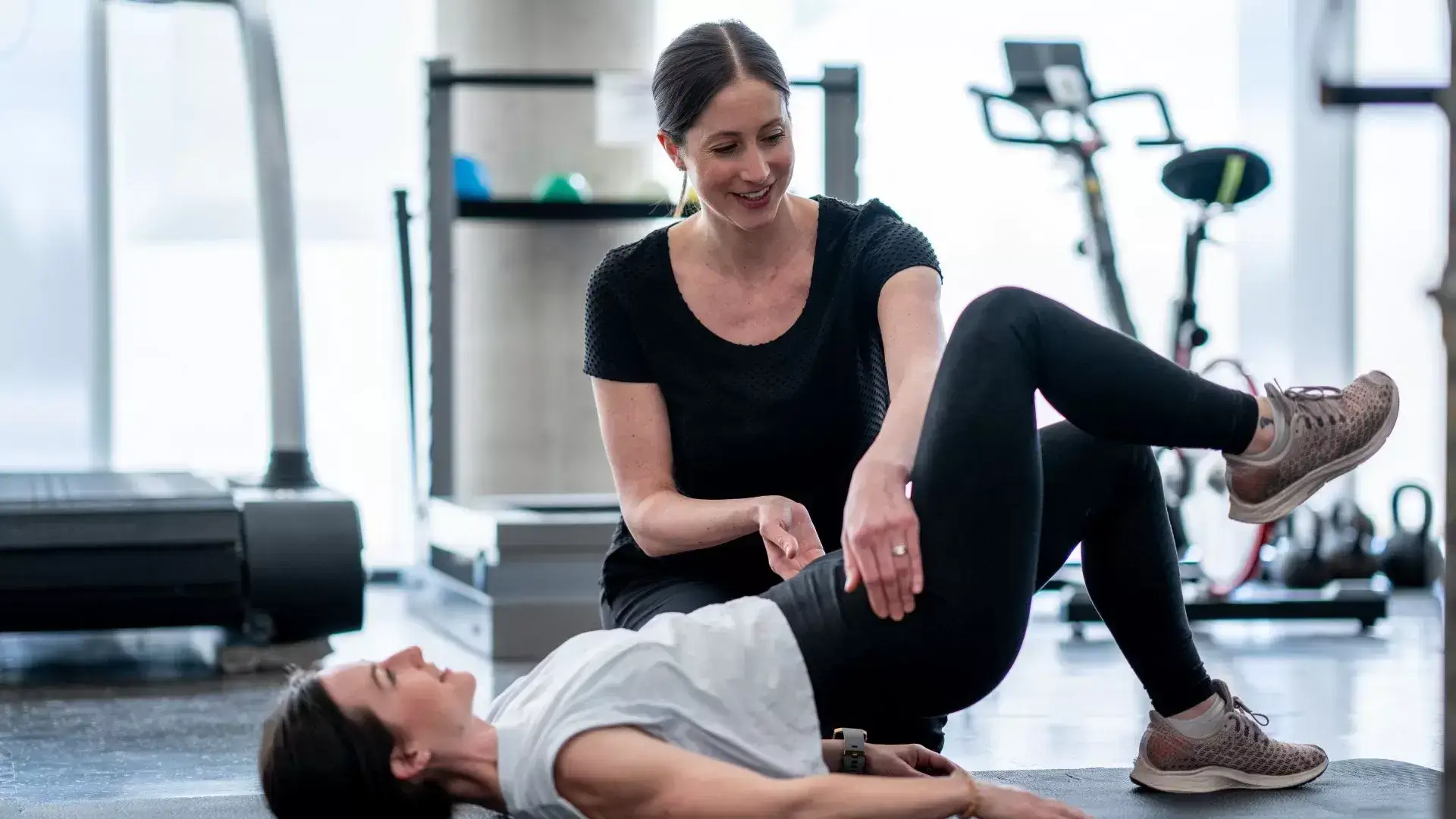When it comes to managing a tailbone injury, we recognize the multifaceted challenges patients face in Mississauga. Our approach to physiotherapy focuses on tailored rehabilitation, addressing both physical and emotional aspects of recovery. Through extensive assessments and specialized treatment plans, we aim to alleviate pain and enhance mobility. However, grasping the specific causes and symptoms of coccyx-related issues is essential for effective treatment. What insights can we gather about the underlying factors that contribute to tailbone pain and how they can shape our recovery strategies?

At Mississauga Physio Chiro Clinic, we specialize in providing tailored physiotherapy and chiropractic services to effectively address tailbone injuries and promote peak recovery. We recognize how debilitating tailbone pain can be, and our thorough approach guarantees that each patient receives personalized care.
Our Top Physiotherapy and Chiropractic Services in Mississauga focus on a combination of techniques designed for effective tailbone pain treatment. We utilize physical therapy for tailbone pain, incorporating targeted tailbone mobility exercises and strengthening exercises to enhance function and support healing. Our team is dedicated to guiding you through a structured tailbone rehabilitation program that prioritizes your comfort and progress.
Additionally, we offer chiropractic care for tailbone pain, focusing on spinal alignment and overall body mechanics to alleviate discomfort. We also recommend the use of a tailbone support cushion to provide relief during daily activities.
Understanding tailbone injuries is crucial, as they can greatly influence daily activities and overall quality of life. Tailbone pain, often resulting from a coccyx injury, can manifest in various forms, including a bruised tailbone or a more severe fractured tailbone. These injuries lead to tailbone discomfort that can hinder our ability to sit comfortably, engage in physical activities, or even perform routine tasks.
The symptoms associated with tailbone trauma often include tailbone tenderness and inflammation, which may exacerbate over time. For some, this can evolve into chronic tailbone pain, considerably affecting their mental and emotional well-being. Coccygeal pain can limit mobility and lead to a cycle of inactivity, further contributing to discomfort and frustration.
It’s crucial for us to recognize the impact of these injuries, as they can vary in severity and require different approaches for effective management. By understanding the nuances of tailbone injuries, we can better support those affected and guide them toward appropriate treatment options, ensuring a pathway to recovery and improved quality of life.
Recognizing the impact of tailbone injuries helps us pinpoint their primary causes, which can include trauma from falls, prolonged sitting, or conditions like childbirth that place stress on the coccyx. These factors lead to a range of issues, such as coccyx pain and coccydynia, which can severely affect our daily lives.
In many cases, a broken tailbone results from a direct impact, resulting in tailbone bruising or swelling that can cause significant discomfort. Prolonged sitting, especially on hard surfaces, can exacerbate tailbone soreness and lead to increased tailbone sensitivity over time. Moreover, the physical strain associated with childbirth can contribute to sacrococcygeal pain, as the pelvic area undergoes considerable stress and trauma.
Additionally, activities that involve repetitive pressure on the coccyx can trigger tailbone pain from injury, leading to persistent discomfort. Understanding these primary causes is essential in addressing tailbone pain and discomfort effectively. By identifying the root of the problem, we can better tailor our physiotherapy approaches to alleviate symptoms and promote recovery, thereby improving our overall quality of life.
Many individuals experiencing a tailbone injury may notice a range of symptoms, including sharp pain during sitting or movement, tenderness at the base of the spine, and discomfort that worsens with prolonged pressure. We frequently encounter patients reporting acute tailbone pain, which can be particularly distressing during activities like standing or sitting for extended periods.
In some cases, a dislocated coccyx or a tailbone fracture can lead to significant sacral pain, making it difficult to engage in daily activities. We need to consider sacrococcygeal joint dysfunction, as it can contribute to persistent coccyx dysfunction and tailbone nerve pain, further complicating recovery.
For postpartum individuals, postpartum tailbone pain can occur, often exacerbated by the physical demands of new motherhood. Symptoms may also include tailbone pain from prolonged sitting, leading to a cycle of discomfort that affects overall quality of life.
Recognizing these symptoms early is essential for effective management. When we grasp the signs of a tailbone injury, we can seek appropriate physiotherapy interventions to alleviate pain and promote healing.

Evaluating tailbone injuries typically involves a combination of clinical assessments and imaging techniques to accurately diagnose the extent of the injury and inform appropriate treatment strategies. We often start by taking a thorough medical history, focusing on symptoms like lower back pain and tailbone pain after childbirth. During the physical examination, we assess for tailbone misalignment and any tenderness in the coccygeal region.
For a more precise evaluation, we may employ diagnostic methods such as X-rays or MRI scans. These imaging techniques help identify potential issues like sacral misalignment, tailbone cysts, or tailbone arthritis, which can greatly affect treatment decisions. If conservative methods aren’t effective, we might consider options like tailbone injection therapy to alleviate pain.
Understanding these diagnostic tools enables us to create personalized rehabilitation plans. By identifying the specific nature of the injury, we can address not just the symptoms but also the underlying causes, ensuring a thorough approach to recovery. Our goal is to help individuals regain mobility and improve their quality of life, maneuvering the complexities of tailbone injuries with empathy and expertise.
Physiotherapy plays a crucial role in the recovery process for individuals with bruised or fractured tailbones, focusing on pain management, mobility restoration, and strengthening surrounding muscles. We often begin by addressing tailbone pain through tailored physiotherapy interventions, ensuring that each patient receives personalized care.
Incorporating specific tailbone pain exercises and stretches, we help to alleviate discomfort and enhance flexibility. It’s important to identify any pelvic misalignment that could exacerbate the condition, allowing us to create an effective treatment plan. We may also recommend ergonomic seating for tailbone pain, helping to reduce pressure on the coccyx during daily activities.
For some cases, particularly those involving osteoarthritis of the coccyx, more advanced techniques like a tailbone nerve block can be considered to manage pain effectively. In severe situations where conservative treatments fail, we might discuss options such as coccygectomy with the patient.
Our goal is to guide individuals through their recovery journey, empowering them with knowledge and strategies to manage their tailbone injury and improve their overall quality of life. With dedicated physiotherapy, we can help individuals regain mobility and reduce tailbone pain.
Hands-on therapy techniques can greatly enhance pain management for individuals suffering from tailbone injuries, providing targeted relief and promoting healing. In our physiotherapy sessions, we often focus on techniques that address specific issues like tailbone muscle strain, tailbone ligament injury, and associated conditions such as pudendal nerve pain and sacral joint pain.
One effective method we utilize is manual therapy, which involves gentle manipulation of the affected areas. This can help alleviate discomfort and improve tailbone posture correction. Additionally, we may incorporate acupuncture for tailbone pain, which has shown promise in reducing inflammation and improving circulation in the region.
We also emphasize the importance of tailored hands-on therapy techniques to address individual needs. By combining approaches like soft tissue mobilization with trigger point therapy, we aim to relieve tension and enhance overall mobility.
Ultimately, our goal is to provide extensive tailbone pain management, ensuring that each individual feels supported and empowered in their recovery journey. Through these hands-on techniques, we can foster healing and improve quality of life for those dealing with the challenges of tailbone injuries.
Incorporating strengthening and mobility exercises into our recovery plan is essential for enhancing stability and reducing pain following a tailbone injury. These exercises can play a significant role in alleviating pain when sitting, addressing perineal pain, and improving overall function.
Strengthening exercises, such as pelvic floor contractions and glute bridges, help support the tailbone and stabilize the surrounding muscles. This is particularly beneficial for those experiencing tailbone pain from cycling or pregnancy, as well as individuals with degenerative joint disease in the tailbone.
Mobility exercises, like gentle stretches and hip rotations, can enhance flexibility and relieve tension that may exacerbate discomfort. By focusing on these areas, we can also combat the effects of poor posture and tailbone pain, which can arise from daily activities or prolonged sitting.
As we progress through our tailbone recovery, it’s important to listen to our bodies and modify exercises as needed, especially after tailbone surgery. Together, we can improve our strength and mobility, ultimately fostering a more comfortable and active lifestyle.

How can we effectively modify our posture and workspace ergonomics to provide ideal support for our tailbone during recovery? Adjusting our sitting habits is essential in alleviating tailbone pressure and addressing sitting pain. We should guarantee our chairs offer adequate lumbar support, helping to maintain a neutral spine position. Using a cushion designed for tailbone support can also relieve discomfort, especially for those suffering from conditions like pilonidal cysts or rheumatoid arthritis of the tailbone.
When working at a desk, we must position our computer monitor at eye level and our feet flat on the ground, promoting a healthy posture. If we find ourselves experiencing tailbone pain at night, it might be beneficial to explore sleeping positions that minimize pressure on the tailbone, such as lying on our side with a pillow between our knees.
In 1834 Lakeshore Rd W unit 6C, Mississauga, ON L5J 1J7, we can reach out for assistance and contact us for tailored advice on managing tailbone pain from obesity and other related concerns. By making these ergonomic adjustments, we can greatly enhance our comfort and support our recovery journey.
When experiencing postpartum tailbone pain, engaging in targeted physiotherapy strategies can considerably alleviate discomfort and support our recovery. First, we should consider pelvic floor exercises, as strengthening these muscles can help stabilize the pelvic region and reduce tailbone strain. Guided breathwork may also assist in promoting relaxation and reducing tension in the surrounding areas.
Incorporating gentle stretching routines into our daily regimen can improve flexibility and alleviate tightness around the coccyx. Techniques such as the cat-cow stretch or seated forward bends can be particularly beneficial. We might also explore modalities like ultrasound therapy or manual therapy, which can provide immediate relief by reducing inflammation and improving circulation.
It’s vital to remember the importance of proper body mechanics, especially during daily activities like lifting and feeding our baby. Our physiotherapist can provide personalized advice on safe practices to avoid exacerbating pain. Finally, we shouldn’t hesitate to communicate openly about our pain levels, as adjusting our treatment plan may be necessary to guarantee ideal recovery. By actively participating in these strategies, we can empower ourselves on the journey to healing.
Persistent tailbone pain can greatly impact our daily lives, but through targeted physiotherapy interventions, we can effectively manage and alleviate this discomfort. Our initial focus will be on understanding the underlying causes of our pain, which may include muscle tightness, joint dysfunction, or inflammation. By identifying these factors, we can develop a tailored treatment plan.
In our sessions, we’ll engage in specific exercises aimed at strengthening the pelvic floor and surrounding muscles. These exercises can help improve stability and support, ultimately reducing pressure on the tailbone. Additionally, manual therapy techniques, such as soft tissue mobilization and joint manipulation, may be utilized to relieve muscle tension and improve mobility.
We’ll also explore postural adjustments and ergonomic modifications to our daily activities, as incorrect posture can exacerbate pain. Education on proper body mechanics during sitting, standing, and lifting will empower us to make healthier choices that support our recovery.
In addition to physiotherapy, incorporating complementary therapies can enhance our recovery from tailbone pain by addressing both physical and emotional aspects of healing. Techniques such as acupuncture can help reduce pain and improve blood flow to the affected area. By stimulating specific points on the body, we can promote natural healing and alleviate discomfort.
Furthermore, mindfulness and meditation practices can be beneficial in managing the emotional stress that often accompanies chronic pain. These methods encourage relaxation and may improve our overall pain perception, helping us cope more effectively with our symptoms.
Massage therapy is another complementary approach worth considering. It can relieve tension in surrounding muscles and improve circulation, which may contribute to a more comfortable recovery process. Additionally, gentle yoga or stretching routines can enhance flexibility and strengthen core muscles, providing further support to our tailbone.
Lastly, nutritional support plays an essential role in recovery. A balanced diet rich in anti-inflammatory foods can help our bodies heal more efficiently. By integrating these complementary therapies with our physiotherapy regimen, we can create a thorough plan that addresses our unique needs and promotes ideal healing.
Applying heat and cold therapy can greatly aid in alleviating tailbone pain by targeting inflammation and promoting circulation in the affected area. When we apply cold therapy, it helps to numb the pain and reduce swelling. We typically recommend using an ice pack wrapped in a cloth for about 15-20 minutes at a time, ensuring we give our skin time to recover between sessions. This method is particularly effective in the first 48 hours following an injury.
On the other hand, heat therapy can be beneficial for chronic pain or stiffness. Applying a heating pad or warm compress can increase blood flow and relax tense muscles surrounding the coccyx. We generally advise using heat for 15-20 minutes, but it’s essential to monitor the temperature to prevent burns.
Combining these two therapies can provide balanced relief. By alternating between heat and cold, we can manage pain effectively while facilitating recovery. However, we should always listen to our bodies and consult a healthcare professional if pain persists. This approach allows us to engage in our daily activities with greater comfort and support our healing process.
To prevent tailbone injuries and their recurrence, we must focus on adopting proper posture and ergonomics during our daily activities. Maintaining an aligned spine while sitting, standing, and walking can greatly reduce the strain on our coccyx. Utilizing supportive seating, especially when sitting for extended periods, is vital. Cushions that provide proper support can alleviate pressure on the tailbone.
We should also integrate regular breaks into our routines. Standing and stretching every hour can help maintain mobility and prevent stiffness, which may contribute to injury. Strengthening exercises for our core and lower back can provide additional support to the pelvic region, further reducing the risk of injury.
Additionally, we need to be mindful of our activities. Participating in sports or exercises that place excessive pressure on the tailbone should be approached with caution. If we engage in high-impact activities, wearing appropriate protective gear can help safeguard our tailbone.
Lastly, it’s important to listen to our bodies. If we experience discomfort, we should address it promptly through rest, physiotherapy, or consultation with a healthcare professional. By adopting these proactive strategies, we can greatly lower our chances of experiencing tailbone injuries.
Post-surgical and injection-based rehabilitation for tailbone injuries focuses on restoring function and alleviating pain through targeted physiotherapy techniques. After surgery or injections, our primary goal is to facilitate healing while minimizing discomfort. We acknowledge that pain can be debilitating, so we tailor our approach to each individual’s needs.
Initially, we’ll emphasize gentle range-of-motion exercises to promote mobility without aggravating the injury. Gradually, we introduce strengthening exercises that target the pelvic floor and surrounding muscles, aiming to support the coccyx and enhance stability. We may also incorporate modalities such as ultrasound or electrical stimulation to reduce pain and inflammation.
We recognize that psychological factors can also play a role in recovery, so we encourage open communication about any concerns or fears. It’s essential for us to provide a supportive environment where patients feel comfortable discussing their experiences.
As we progress through rehabilitation, our focus remains on functional outcomes, enabling you to return to daily activities with confidence. We’re committed to guiding you through this journey, ensuring that you regain strength and mobility while addressing any lingering discomfort. Together, we’ll work towards a successful recovery.
If you’re experiencing tailbone pain, booking a physiotherapy consultation in Mississauga can be a crucial step toward effective treatment and recovery. We recognize that tailbone pain can greatly impact your daily life, making it difficult to sit, stand, or even engage in recreational activities. Our goal is to provide you with tailored physiotherapy interventions that address your specific needs.
During our initial consultation, we’ll conduct a thorough assessment to identify the underlying causes of your discomfort. This may include evaluating your posture, movement patterns, and any previous injuries. Based on this assessment, we will develop a personalized treatment plan that may incorporate manual therapy, targeted exercises, and education about pain management strategies.
We also emphasize the importance of communication and collaboration in your recovery process. By working together, we can monitor your progress and make necessary adjustments to your treatment plan. Our compassionate approach guarantees that you feel supported throughout your journey to recovery. So, let’s take that first step together towards alleviating your tailbone pain. Booking a consultation with us can set you on the path to regaining your comfort and quality of life.
Mississauga, a vibrant city in the Greater Toronto Area, offers a supportive community for those seeking recovery from conditions like tailbone injuries, enhancing both physical and emotional well-being. With its diverse population and numerous healthcare facilities, we recognize that Mississauga provides ample resources for individuals in need of physiotherapy and rehabilitation services.
The city boasts a range of parks and recreational areas that encourage physical activity, which can be essential in the healing process. We understand that engaging in gentle movements and exercises under professional guidance can greatly aid recovery from tailbone injuries.
Moreover, the presence of specialized clinics and certified physiotherapists guarantees that we have access to evidence-based treatments tailored to our specific needs. These professionals not only focus on physical recovery but also emphasize the importance of mental health during rehabilitation.
As we navigate our recovery journeys, the community support in Mississauga fosters an environment where we feel understood and motivated. With ongoing education and outreach programs, we can learn more about managing pain and preventing future injuries, securing a healthier, more active lifestyle moving forward.

When we consider recovery from a tailbone injury, it typically takes about four to six weeks for most individuals to heal. However, this timeframe can vary based on factors like the severity of the injury and our overall health. We should remember that everyone’s recovery journey is unique, and it’s essential to listen to our bodies and consult healthcare professionals for tailored advice and support during this healing process.
To alleviate tailbone pain at home, we can start by using a cushion or pillow while sitting to reduce pressure. Applying ice packs for 15-20 minutes can help manage inflammation. Gentle stretching exercises might also be beneficial, and we should avoid prolonged sitting. Over-the-counter pain relievers can provide temporary relief. It’s important to listen to our bodies and consult a healthcare professional if the pain persists or worsens.
When recovering from any injury, it’s essential we avoid certain activities that could hinder our healing. We should steer clear of prolonged sitting, heavy lifting, and high-impact exercises, as these can exacerbate discomfort. Additionally, activities that strain our lower back or require excessive twisting should be minimized. By being mindful of our movements and choices, we can support our recovery process and promote a smoother healing journey.
Tailbone injuries can indeed lead to long-term complications if not properly managed. We might experience chronic pain, discomfort during sitting, or difficulty with certain movements. It’s important to recognize that everyone’s recovery is unique, and some may develop persistent issues. By staying informed and seeking appropriate care, we can minimize the risk of long-term complications. Open communication with healthcare providers during recovery is essential to address any concerns effectively.
When we’re recovering from a tailbone injury, wearing the right clothing can make a significant difference. We should opt for loose-fitting pants or shorts that don’t put pressure on the coccyx. Soft, breathable fabrics can also enhance comfort. Additionally, using a cushion or specialized seat can provide extra support while sitting. It’s crucial to prioritize our comfort during recovery, so let’s choose attire that allows us to heal without unnecessary strain.
Reach out to us today to book an appointment or learn more about our services. Our friendly team is here to answer your questions and help you take the first step toward improved health and wellness.
(647) 372-1209

At our “Mississauga Physio Chiro Clinic”, we are dedicated to providing personalized care that addresses the root cause of your discomfort. With a team of experienced physiotherapists and chiropractors, we focus on restoring your mobility, relieving pain, and enhancing your overall well-being.